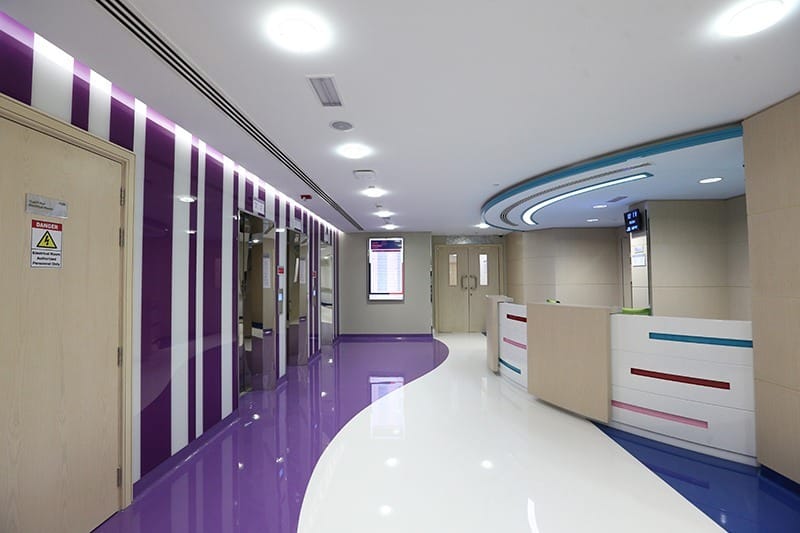What is Conductive Rubber Flooring? A Comprehensive Guide

In various industries, flooring plays a critical role in ensuring safety, durability, and functionality. One specialized type of flooring that has gained popularity in environments where electrostatic discharge (ESD) control is crucial is conductive rubber flooring. This flooring solution is designed to provide a controlled path for electrical charges, preventing static buildup and discharge that could potentially damage sensitive equipment or pose safety risks
Understanding Conductive Rubber Flooring
Conductive rubber flooring is a specially engineered type of flooring material designed to conduct electricity. It consists of rubber infused with conductive materials such as carbon or graphite, allowing electric charges to flow safely through the flooring and into a grounded system. This prevents electrostatic discharge from accumulating on surfaces, reducing the risk of damage to electronic components or hazardous incidents in explosive environments.
This type of flooring is commonly used in areas where static electricity can create risks, including manufacturing plants, laboratories, server rooms, hospitals, and electronic assembly lines. It is particularly beneficial in industries that rely on highly sensitive electronic equipment.
How Conductive Rubber Flooring Works
Conductive rubber flooring works by providing a low-resistance pathway for electrical charges to move safely to the ground. It typically consists of multiple layers, including:
Surface Layer: Made of high-quality rubber mixed with conductive agents to facilitate charge dissipation.
Conductive Layer: This layer helps in transferring the electrical charge from the surface layer to the ground.
Grounding System: The flooring is connected to a grounding system using conductive adhesives, copper strips, or other grounding methods to ensure effective charge dissipation.
By efficiently controlling electrostatic discharge, conductive rubber flooring prevents unwanted damage to electronics and ensures a safe working environment.
Key Benefits of Conductive Rubber Flooring
1. Electrostatic Discharge Protection
One of the primary advantages of conductive rubber flooring is its ability to control electrostatic discharge. In environments such as electronics manufacturing or laboratories, static electricity can damage delicate components. Conductive rubber flooring prevents this by dissipating electrical charges safely.
2. Enhanced Safety
Conductive rubber flooring reduces the risk of electric shocks, fires, and explosions caused by static buildup. This makes it an essential flooring choice for industries working with flammable substances, gases, or highly sensitive electronic devices.
3. Durability and Longevity
Made from high-quality rubber materials, conductive rubber flooring is highly durable and can withstand heavy foot traffic, machinery, and equipment movement. It offers a long lifespan, making it a cost-effective investment.
4. Comfort and Ergonomics
Unlike hard flooring materials like ceramic or metal, conductive rubber flooring offers a cushioned surface, reducing fatigue for workers who stand for long hours. This improves workplace comfort and productivity.
5. Chemical and Moisture Resistance
Conductive rubber flooring is resistant to moisture, chemicals, and oils, making it ideal for laboratories, hospitals, and industrial environments where spills are common.
6. Easy Maintenance
The smooth, non-porous surface of conductive rubber flooring makes it easy to clean and maintain. Regular sweeping and occasional mopping with anti-static cleaning agents help maintain its conductivity and performance.
Applications of Conductive Rubber Flooring
Conductive rubber flooring is widely used in various industries and settings, including:
1. Electronics Manufacturing and Assembly
Protects sensitive electronic components from static discharge.
Ensures a controlled environment for precision work.
2. Hospitals and Medical Facilities
Used in operating rooms and laboratories where sensitive medical equipment is used.
Reduces the risk of interference with electronic medical devices.
3. Server Rooms and Data Centers
Prevents static buildup that could damage computer servers and networking equipment.
Ensures uninterrupted functionality of IT infrastructure.
4. Pharmaceutical and Chemical Industries
Provides a safe working environment by reducing the risk of fire or explosion caused by static electricity.
Maintains cleanliness and prevents contamination.
5. Military and Aerospace Facilities
Used in environments where electronic interference must be minimized.
Protects communication and defense equipment from static-related malfunctions.
Installation of Conductive Rubber Flooring
Installing conductive rubber flooring requires careful planning to ensure proper functionality. The process typically involves:
1. Surface Preparation
The existing floor surface must be clean, dry, and free from dust or debris.
Any cracks or imperfections should be repaired before installation.
2. Applying Conductive Adhesive
A special conductive adhesive is used to bond the flooring to the substrate.
Copper grounding strips are placed at intervals to ensure electrical conductivity.
3. Laying the Flooring
The conductive rubber flooring is carefully positioned and rolled out to eliminate air pockets.
Seams are sealed to maintain continuity and conductivity.
4. Grounding the System
The conductive rubber flooring is connected to an external grounding point to enable safe dissipation of electrical charges.
5. Final Testing
After installation, the flooring’s conductivity is tested to ensure it meets industry standards and functions correctly.
Maintenance Tips for Conductive Rubber Flooring
To maintain the effectiveness of conductive rubber flooring, follow these maintenance practices:
Regular Cleaning: Sweep or vacuum daily to remove dust and debris that may affect conductivity.
Use Approved Cleaning Agents: Avoid harsh chemicals that could degrade the rubber material or alter its conductive properties.
Periodic Conductivity Testing: Conduct routine tests to ensure the flooring maintains its electrostatic discharge properties.
Avoid Waxing or Polishing: These can create an insulating layer that interferes with conductivity.
Address Damages Promptly: Repair any tears or surface damage immediately to prevent functional issues.
Conclusion: Conductive rubber flooring is a critical solution for industries where electrostatic discharge poses a risk to equipment and personnel. Its ability to control static electricity, combined with durability, safety, and ease of maintenance, makes it a preferred flooring option in various settings. Whether in electronics manufacturing, hospitals, or data centers, investing in conductive rubber flooring ensures enhanced protection, efficiency, and long-term cost savings. By choosing the right flooring material and maintaining it properly, businesses can create a safer and more reliable working environment.
Note: IndiBlogHub features both user-submitted and editorial content. We do not verify third-party contributions. Read our Disclaimer and Privacy Policyfor details.



